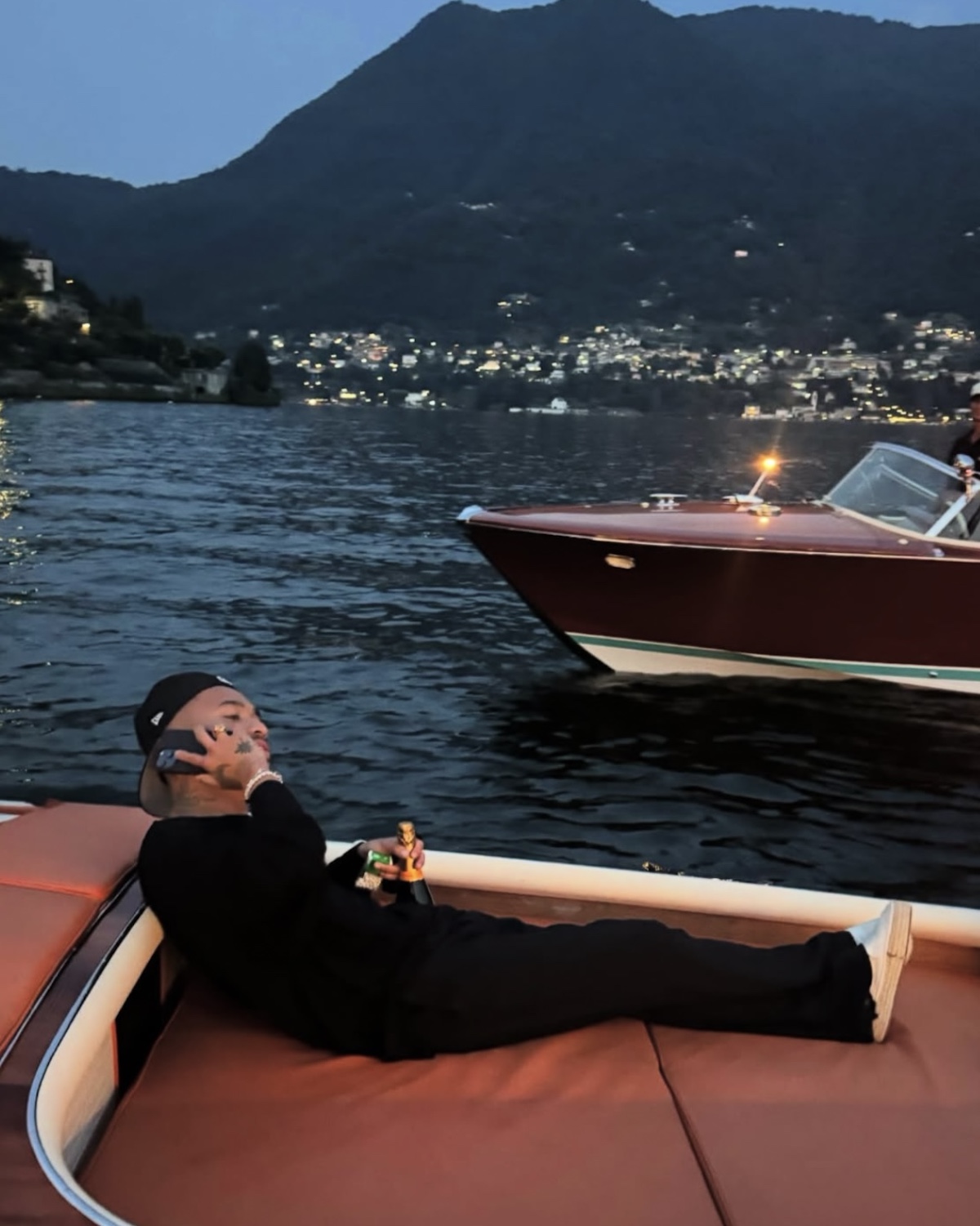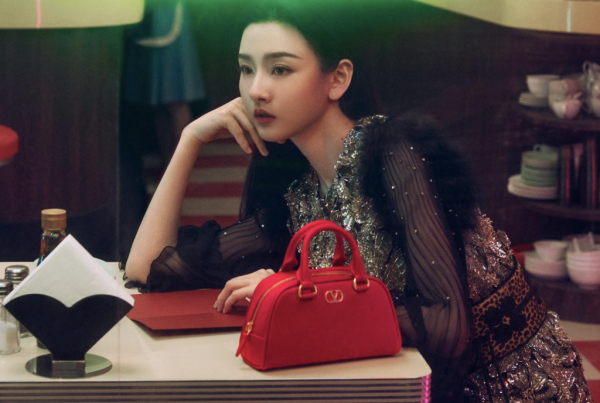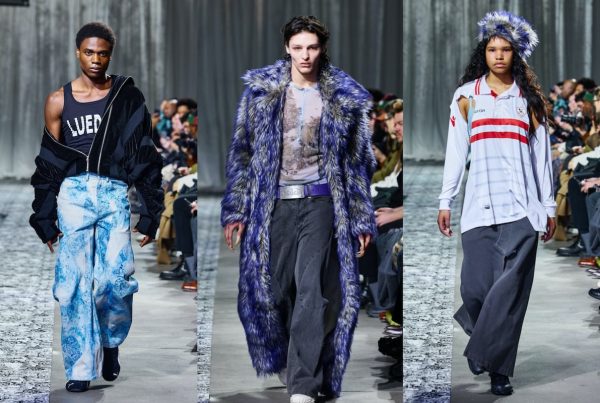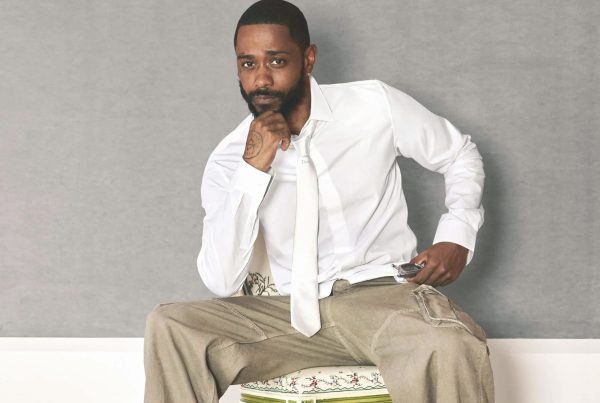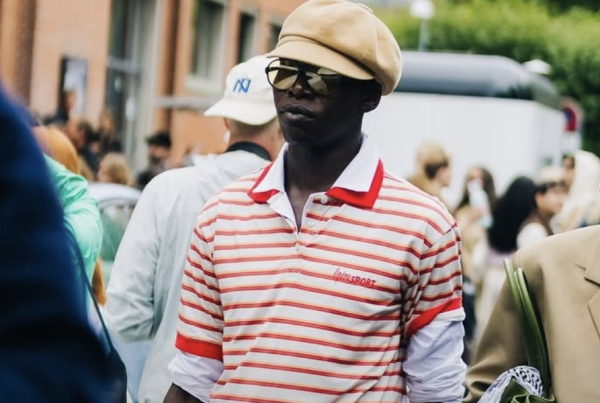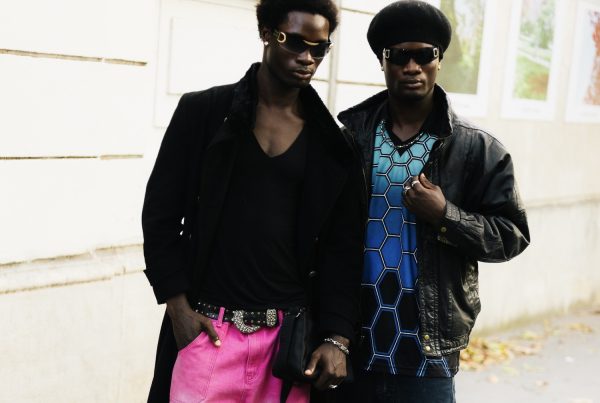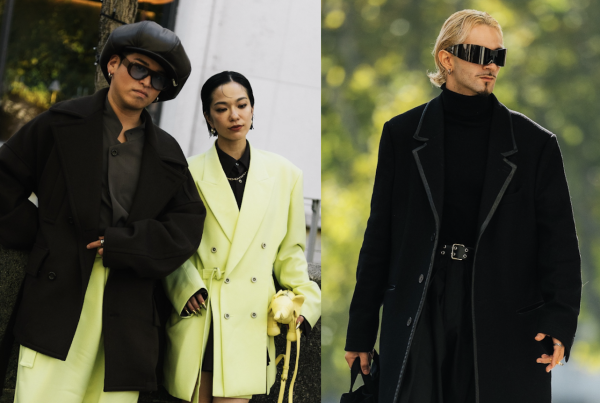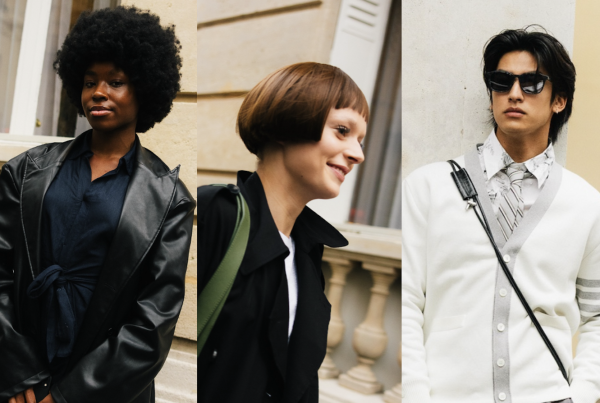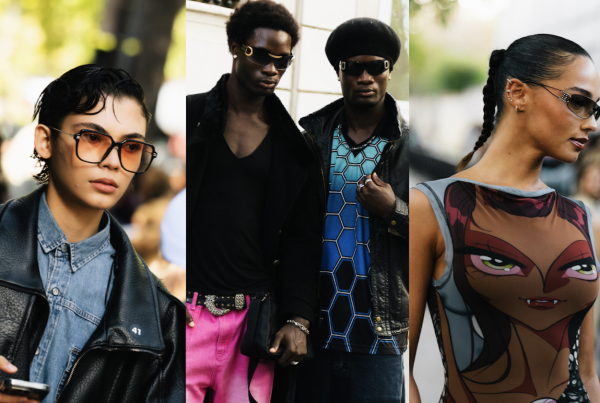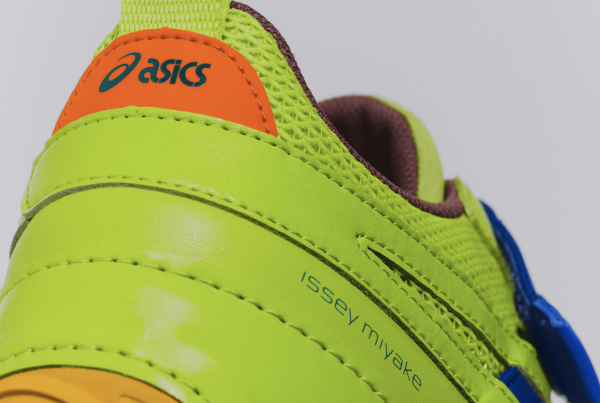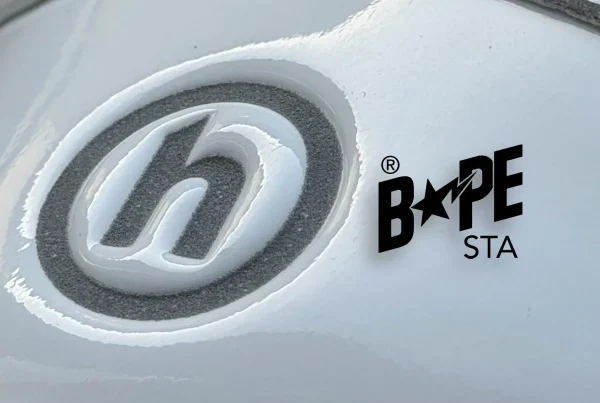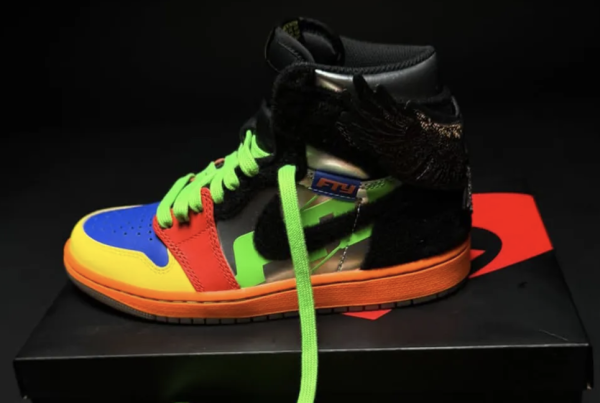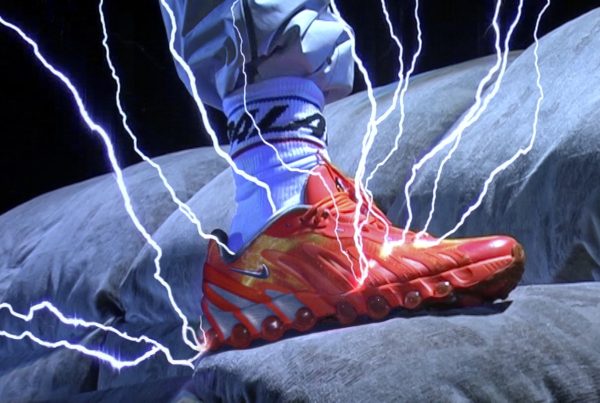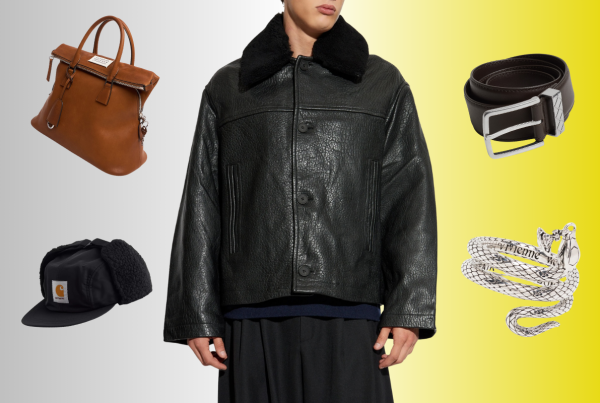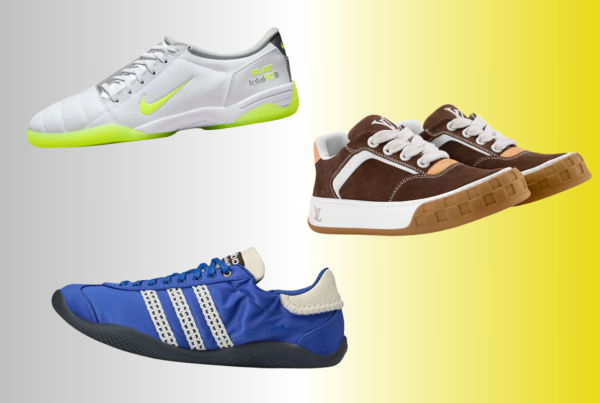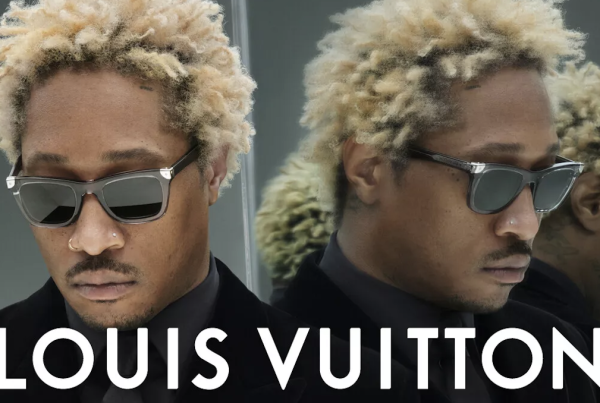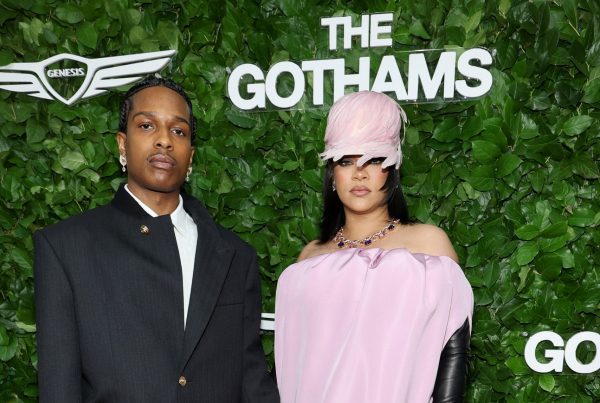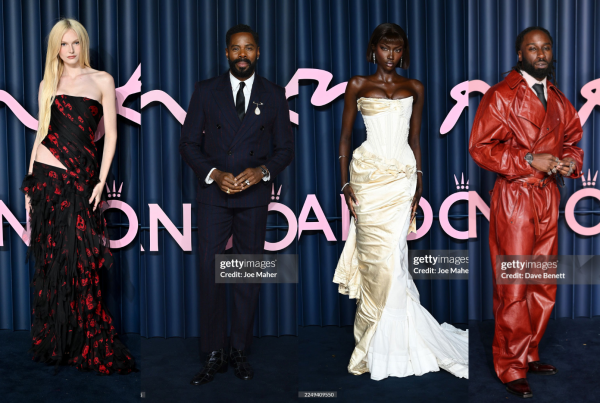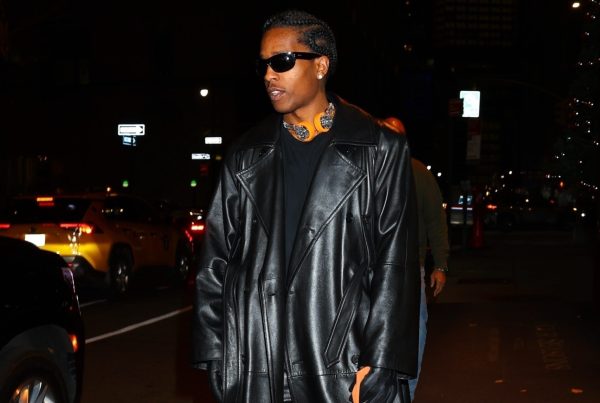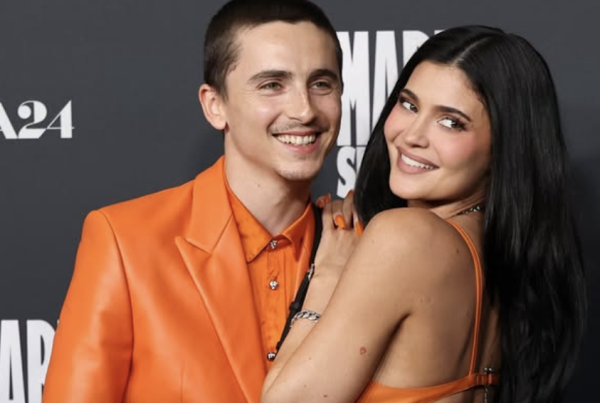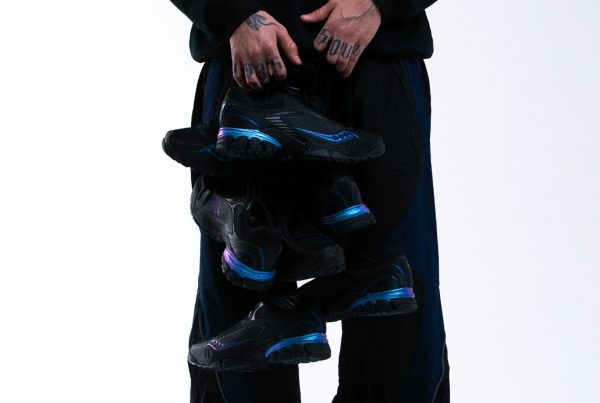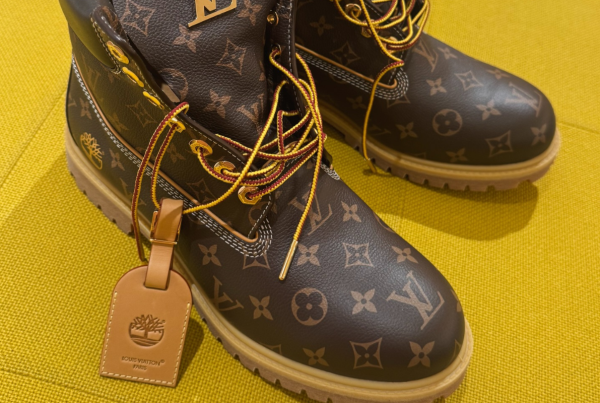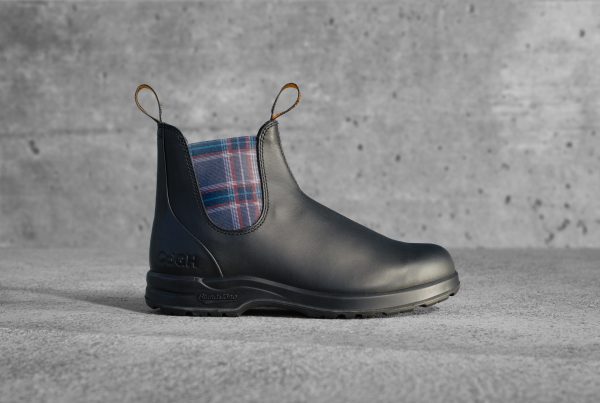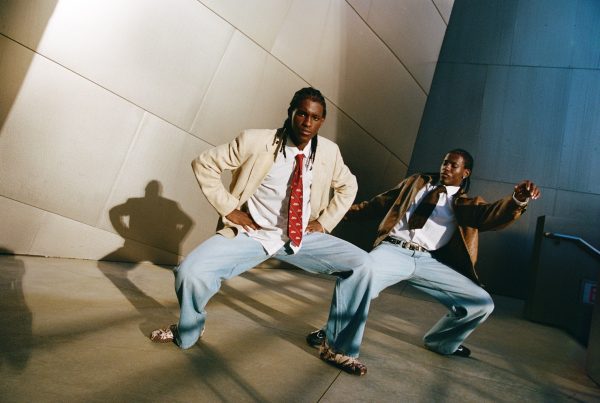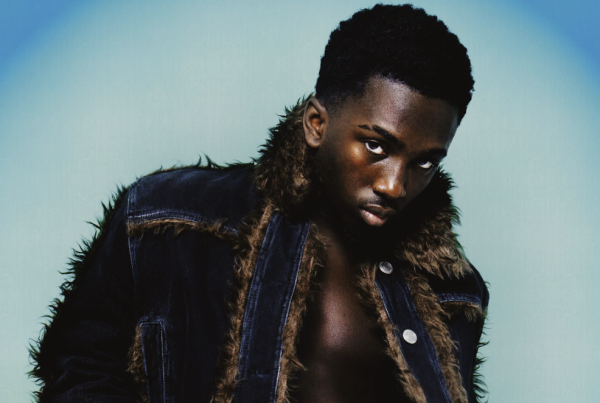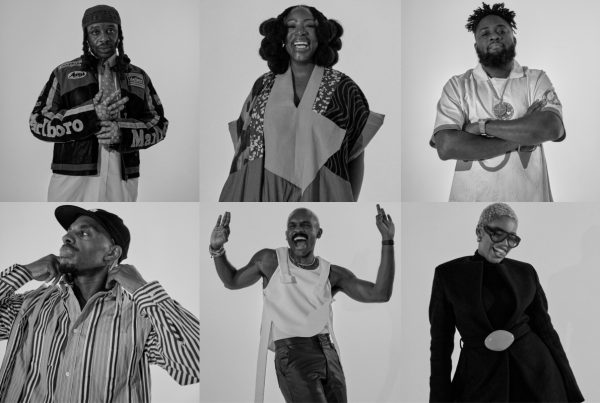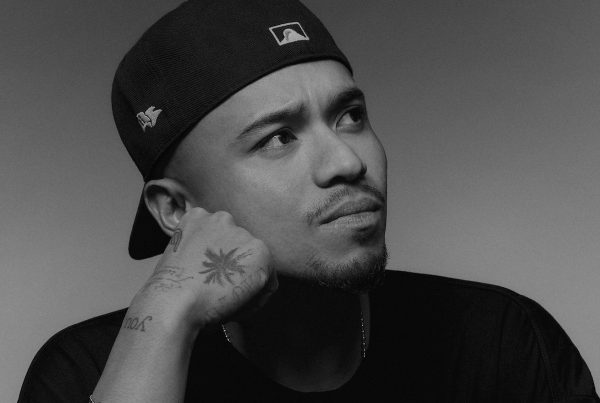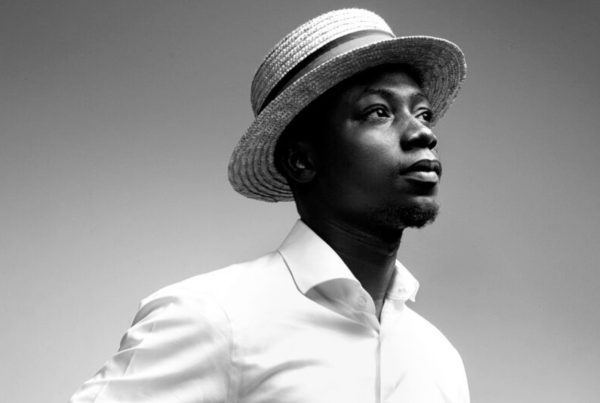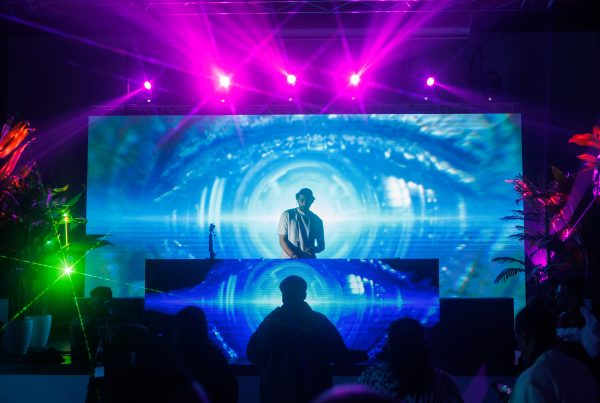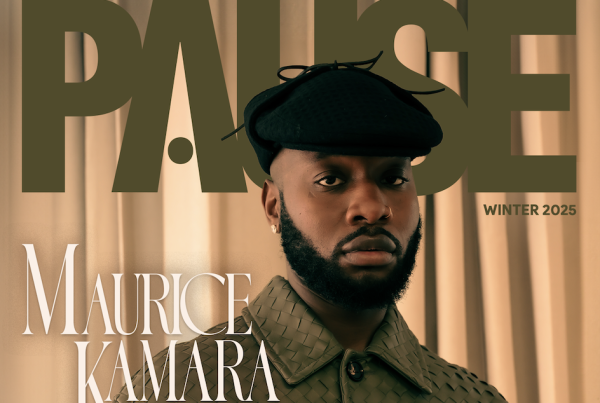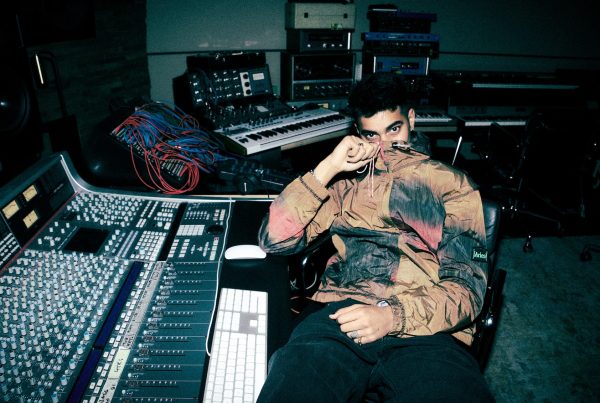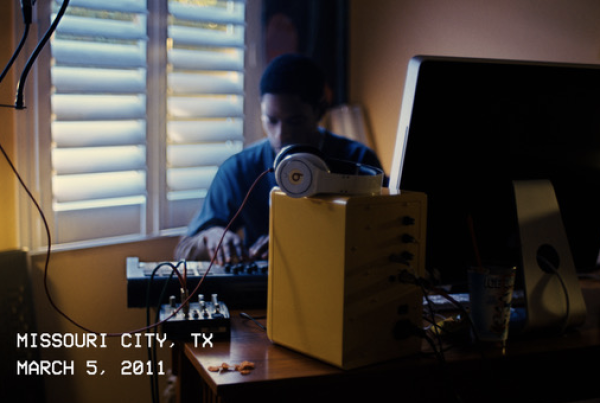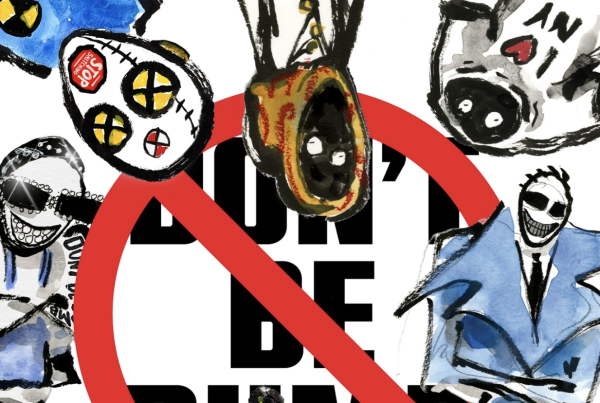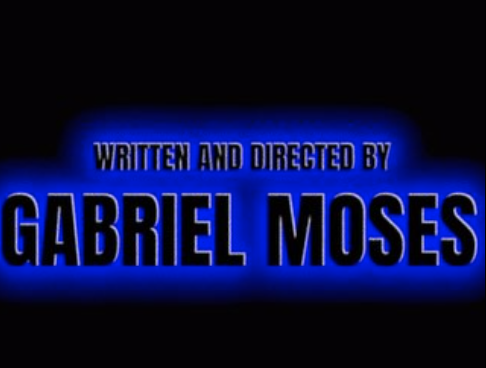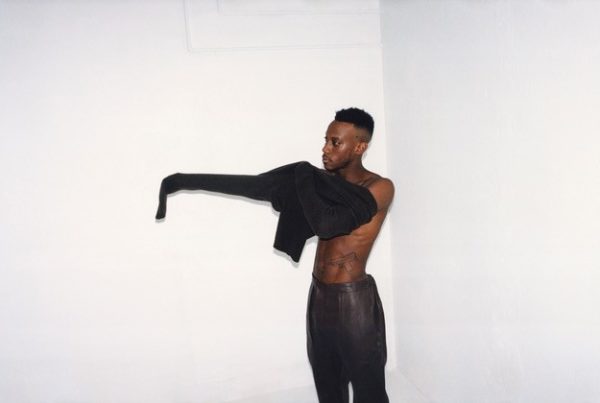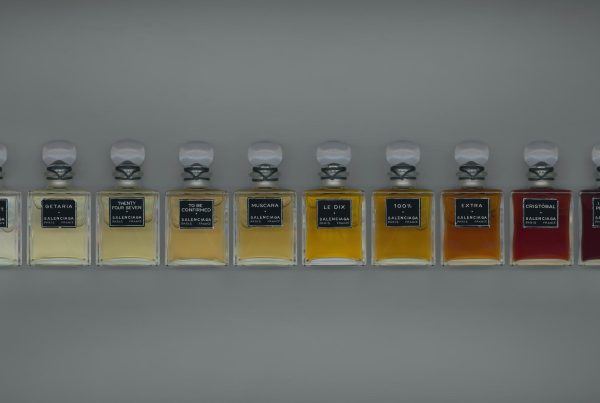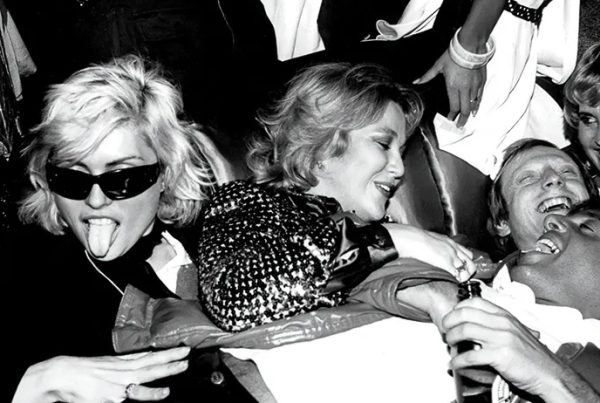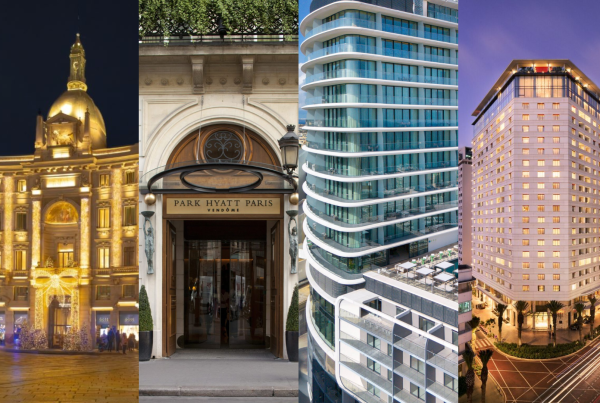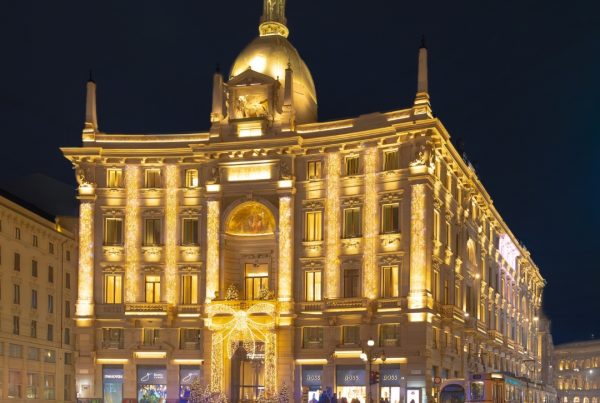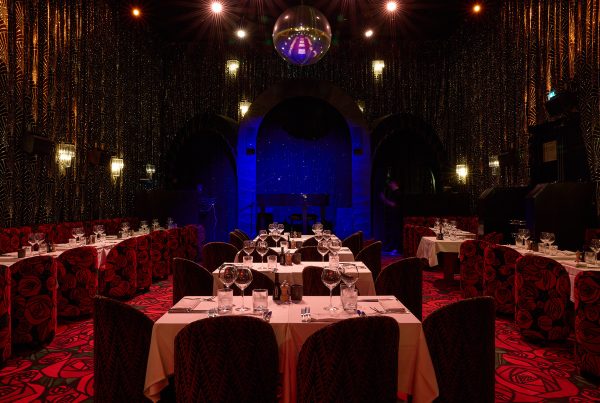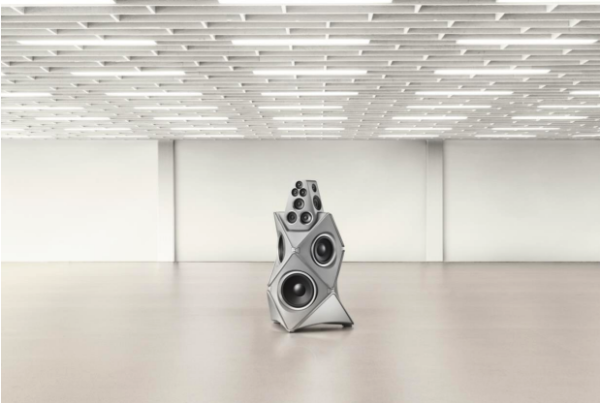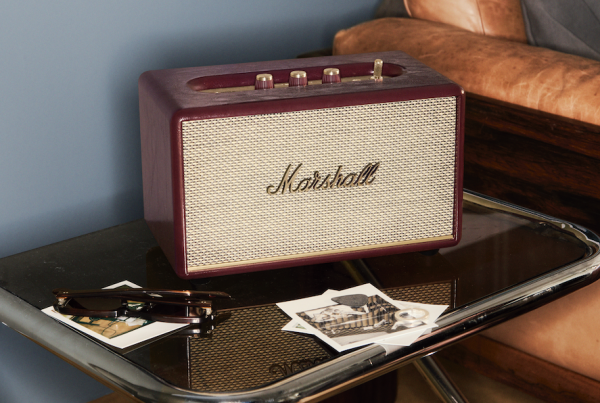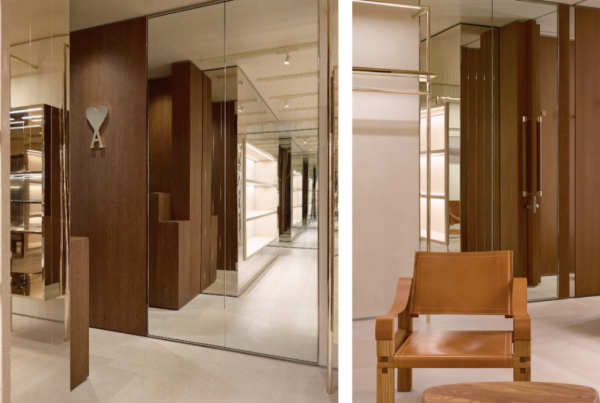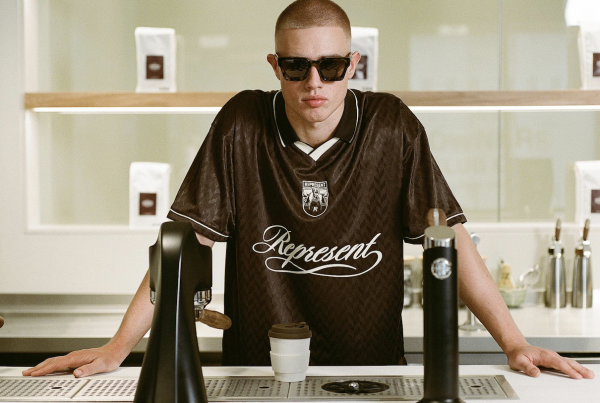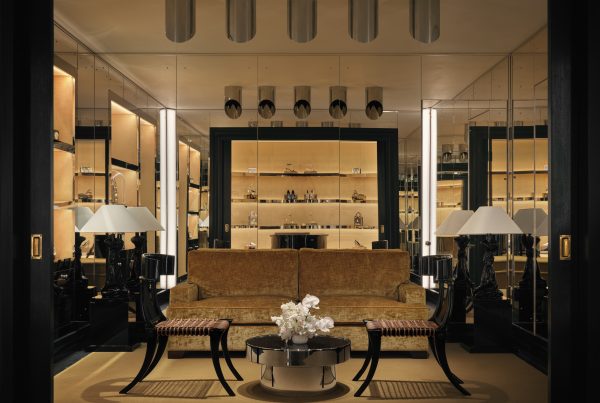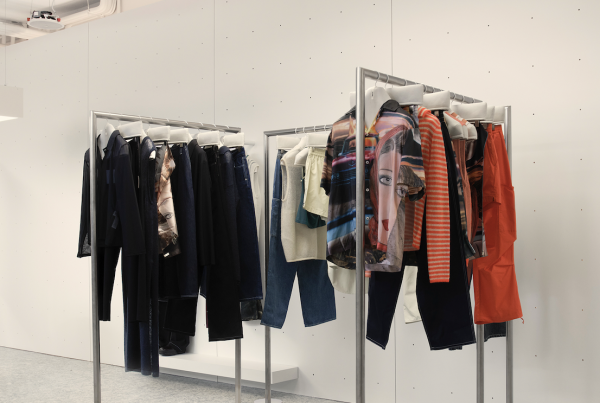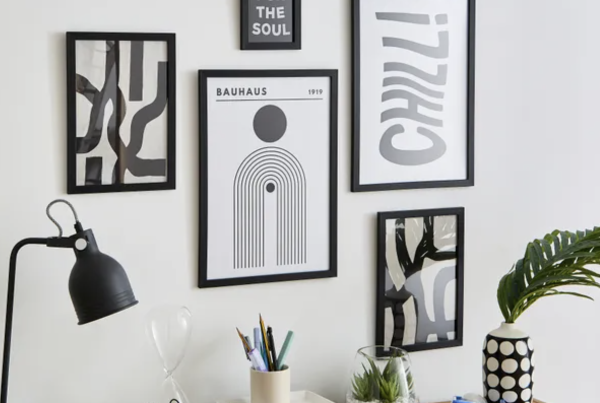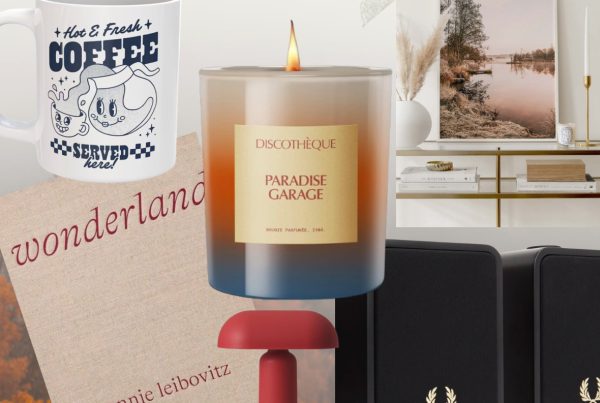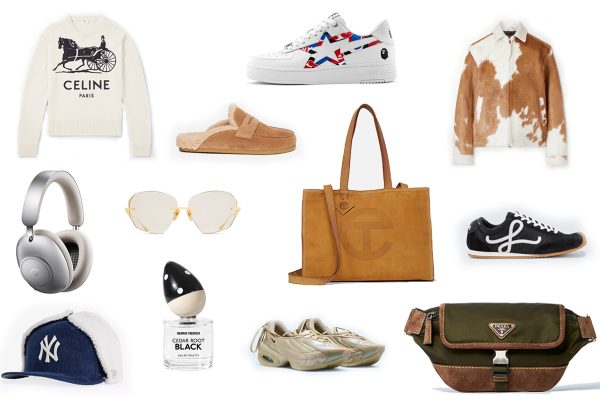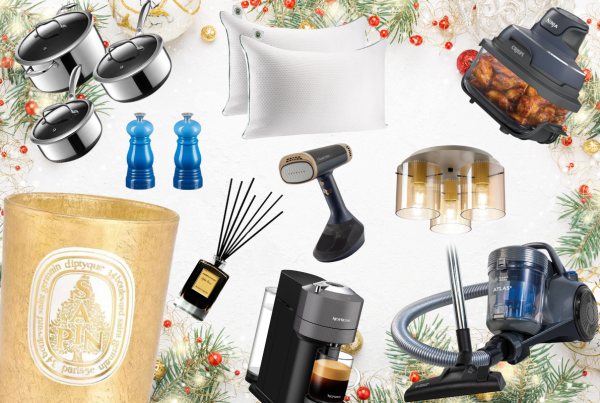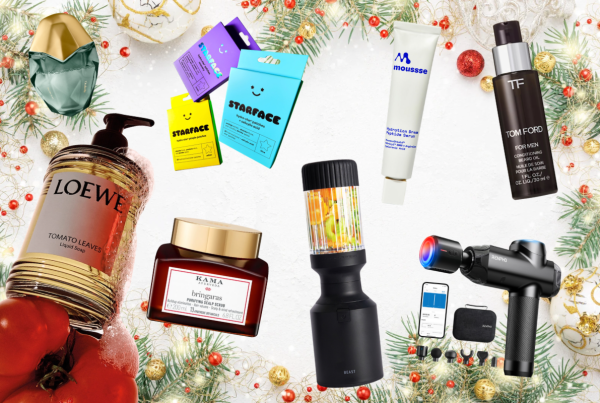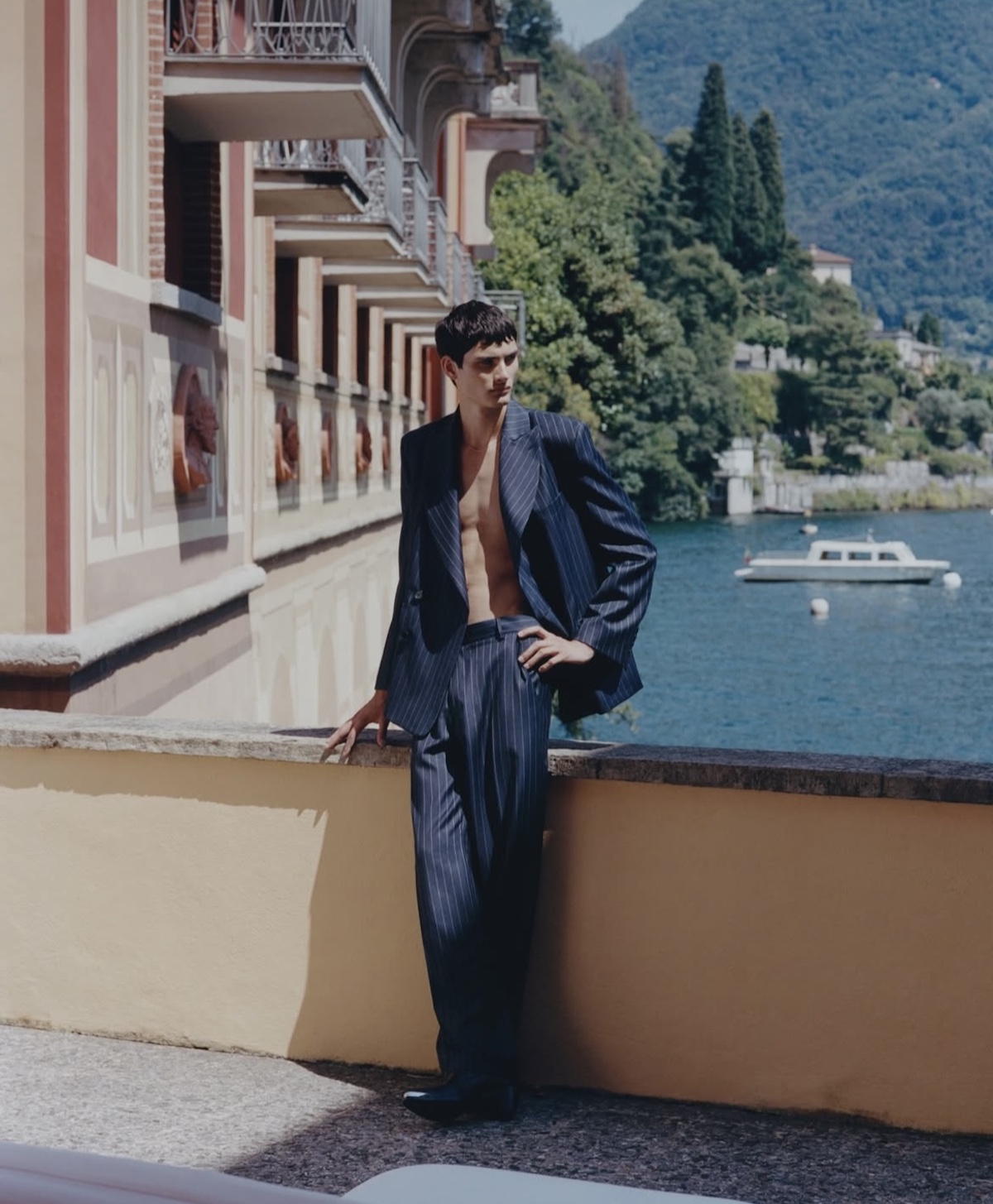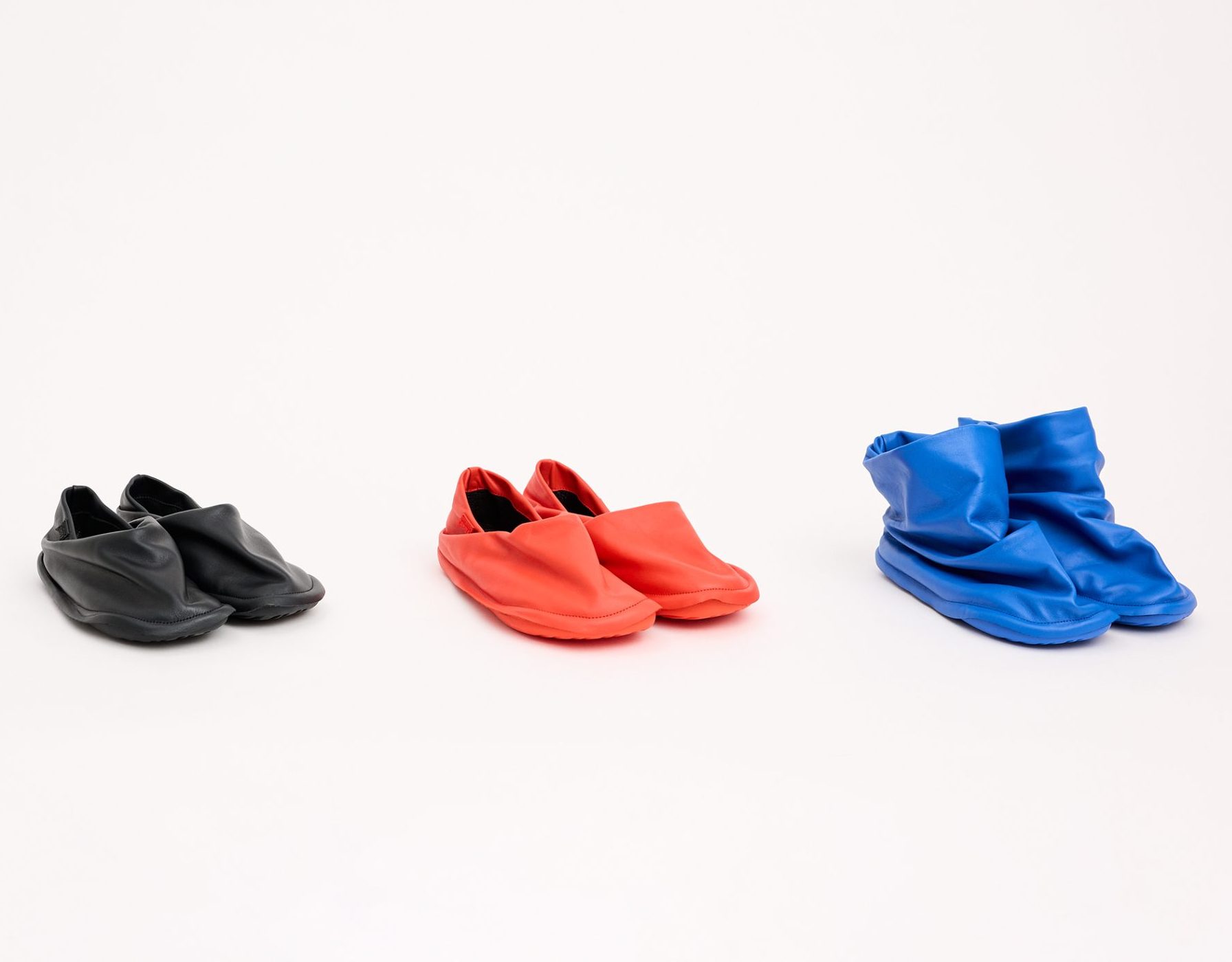Renaissance Man.
The key to success is different for everyone. Constantly living up to the expectations of a harsh and critical society, pursuing a dream, or fighting your own mind to find balance, it’s a challenge that can strip away your essence. And once you finally make it, it’s easy to lose your footing. Now imagine all of this as a fashion designer. For Rhuigi Villaseñor, the key lies in family, hard work, and balance, all while pushing his brand, Rhude, to the next level.
The past year has been anything but slow: multiple collaborations, a move to Como, Italy, and his appointment as the Chief Brand Officer of a football club have all reshaped his path. With this change came a fresh source of inspiration: the local culture. The essence of Rhude lies in its formula: crafted design with precise execution, seen through thoughtful collaborations and shows, a “slow fashion” philosophy, and a distinctive touch of luxury. It’s a formula that has driven Rhude’s success, all while taking Rhuigi back to his roots. With Filipino heritage and California cool running through his veins, he’s come full circle. “I try to avoid putting myself in a box,” he says.
In this interview, PAUSE dives into the phenomenon of Rhude—from its origins to the evolving narrative happening behind the scenes. We explore Rhuigi’s collaborations with Adidas and Pirelli, his personal growth, and the challenges of navigating today’s fashion world.
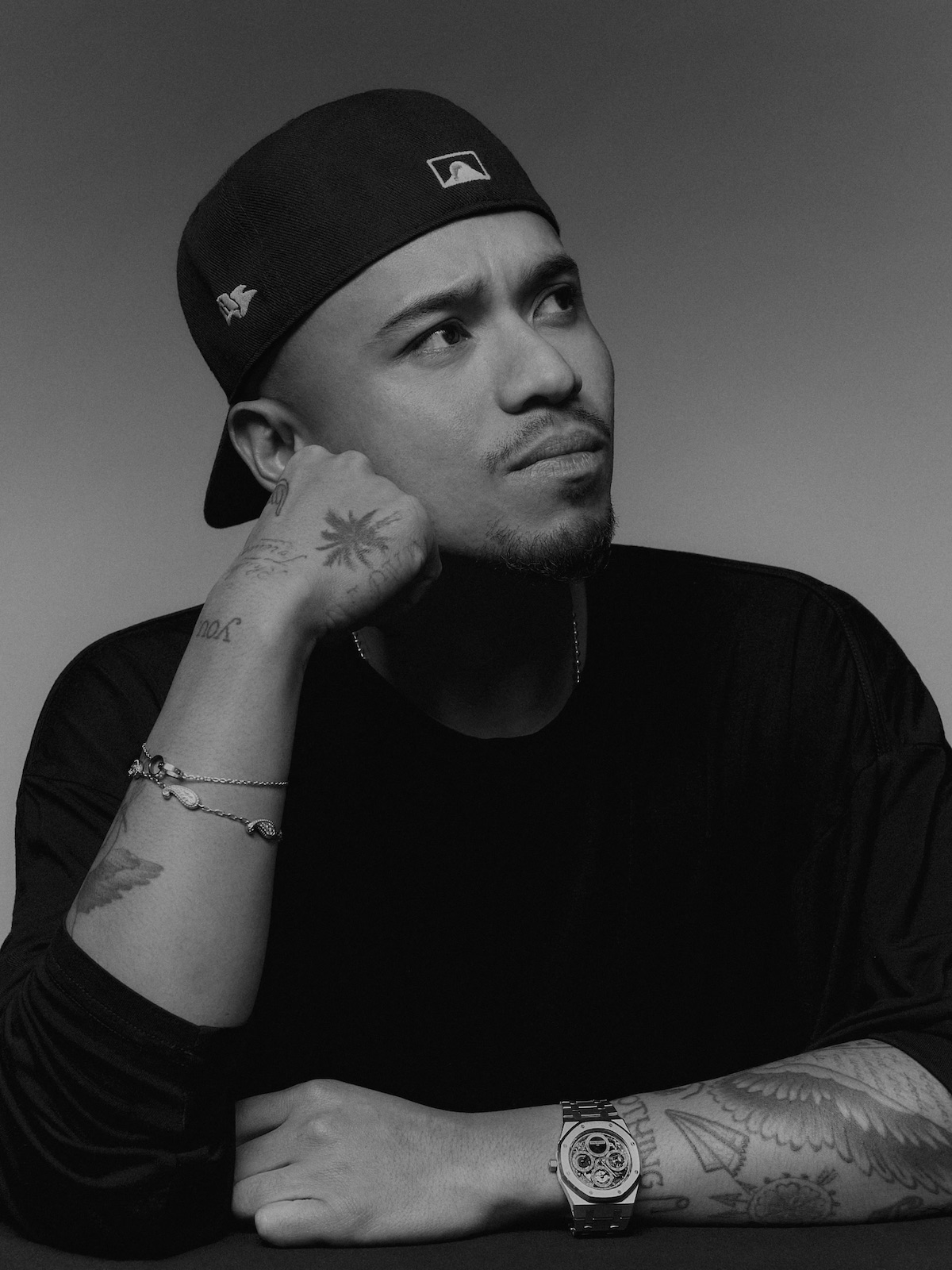
PHOTO CREDIT: Rhuigi Villaseñor, founder and creator of RHUDE.
PHOTO CREDIT: RHUDE/ Antony Corandi
Let’s start from the present moment. You’ve had an incredible year: Major collaborations, a new collection, and a life split between Italy and global fashion capitals. How are you feeling right now? How do you ground yourself amidst all of it?
I feel good. Living in Como has been great. I still live in Los Angeles too, so the brand is still very much powered in America. Living between LA and Como gives me a nice balance. I spend a lot of time by the lake, focusing on daily routines, being healthy, and doing things that really matter. It’s been working well for me, especially when it comes to designing collections. The football club is also doing really well. When I need a dose of energy, I fly to Paris or head back home to LA.
You have Filipino heritage, American roots, and now you’re living in Italy while working mainly in the European fashion scene. How have you navigated the cultural contrasts across these spaces?
I wear my heart on my sleeve when it comes to design. I bring in my personal stories, my family, my heritage, and everything I’ve learned through traveling. That’s the anchor to my aesthetic. I still carry the relaxed California vibe in my designs, but now I’m really leaning into sartorial elements and relaxed tailoring. Being in Europe, it’s inevitable. The craftsmanship here is deep-rooted in history. So combining LA coolness with European tailoring, leatherwork, and the resources here, it feels like a natural evolution. Hopefully, it leads to magic.
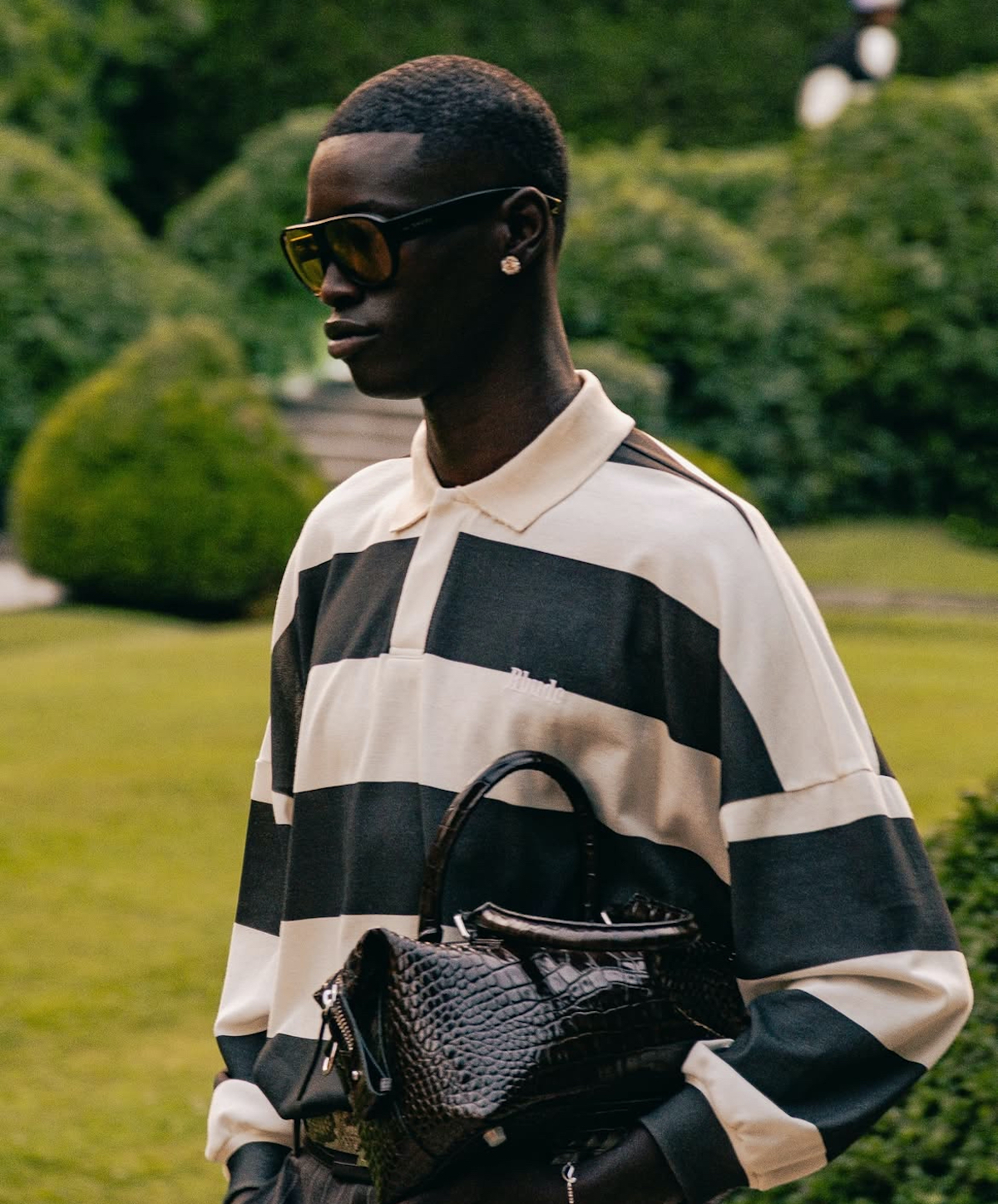
And in terms of fashion specifically, Do you notice a shift in aesthetic, audience, or approach between these different markets?
Absolutely. It’s very different. I think the American market is tough, especially for people coming from outside. But I understand the American customer really well. Now, I’m learning more about the European market and other global regions. My goal is to blend all these insights into a cohesive vision. It’s a process. Wherever you are for a long time, you start to absorb the culture and thinking. But I try not to lose myself in that. I don’t want to fully embed into something that’s not where I’m from. I try to avoid putting myself in a box.
You grew up with a mother involved in costume design and a father in architecture. Was there a particular influence or lesson from either world that stuck with you and shaped your creative path?
Definitely. My mother was very artistic, and my father was more practical, he focused on outcomes and what things would generate, like putting food on the table. My mother was driven by emotion. She was very emotionally intelligent, and she channeled that into her art. I learned from both ends, and I carry that into my daily life. I also don’t want to downplay struggle. I grew up not having it all. Struggle forces you to dream, to imagine what you want to see in the world. I didn’t just want things for myself, I envisioned something bigger. That kind of thinking led me to create everything I’ve built. The struggle gave me purpose. My “why” was to create a better life. It wasn’t just about making a statement artistically, I needed to survive.
How did the journey of creating RHUDE begin? What was the original vision, and how has it evolved?
The original vision was to create something that told my story, my version of the American dream. It started with a T-shirt and a hoodie. Everyone enters fashion differently. For Ralph, it was ties and shirts. For me, it was a T-shirt and hoodie, which could be considered the modern version of that. I just wanted something that looked expensive and different. That turned into shorts, pants, and eventually a full brand. In the beginning, it wasn’t even about starting a brand, it was just something I wanted for myself. Then it grew into a full 360-degree brand. We did it step by step. As we grew, we added categories. I’ve been fortunate that the brand has had the strength to expand into other areas beyond fashion.
Rhude has grown dramatically over the years. If you look back just a year ago, before getting involved in the football world, what’s the biggest difference you see in the brand and yourself as a creative?
The core of the brand is still the same, it’s about California and this vision of the American dream. But as we’ve grown, I’ve had to pull it back more into my personal life. At one point, the brand was drifting a bit from the original vision. Now, I’m refocusing it. The distribution is wider, and it’s no longer just about making T-shirts to make ends meet. It’s a real company that needs to perform. We need to keep customers happy and tell the story right. As the brand grows, I grow too. The direction of the brand reflects my life, so it evolves with me.
What would you say has been the key to your success so far with the brand?
Staying true to my family. Whenever I spend time with them, I’m reminded of where I came from. We didn’t have much growing up, and remembering those times keeps me grounded. It’s easy to get numb when you’re constantly seeing things from the same perspective. Like, if you live next to the Eiffel Tower, you stop seeing how beautiful it is. So I make time to be around people who ground me. That helps me see things with fresh eyes. Even in business, when we’re reviewing dozens of material a week, things start to feel old. But the customer may be seeing it for the first time. I try to bring that awareness into my design process every day.
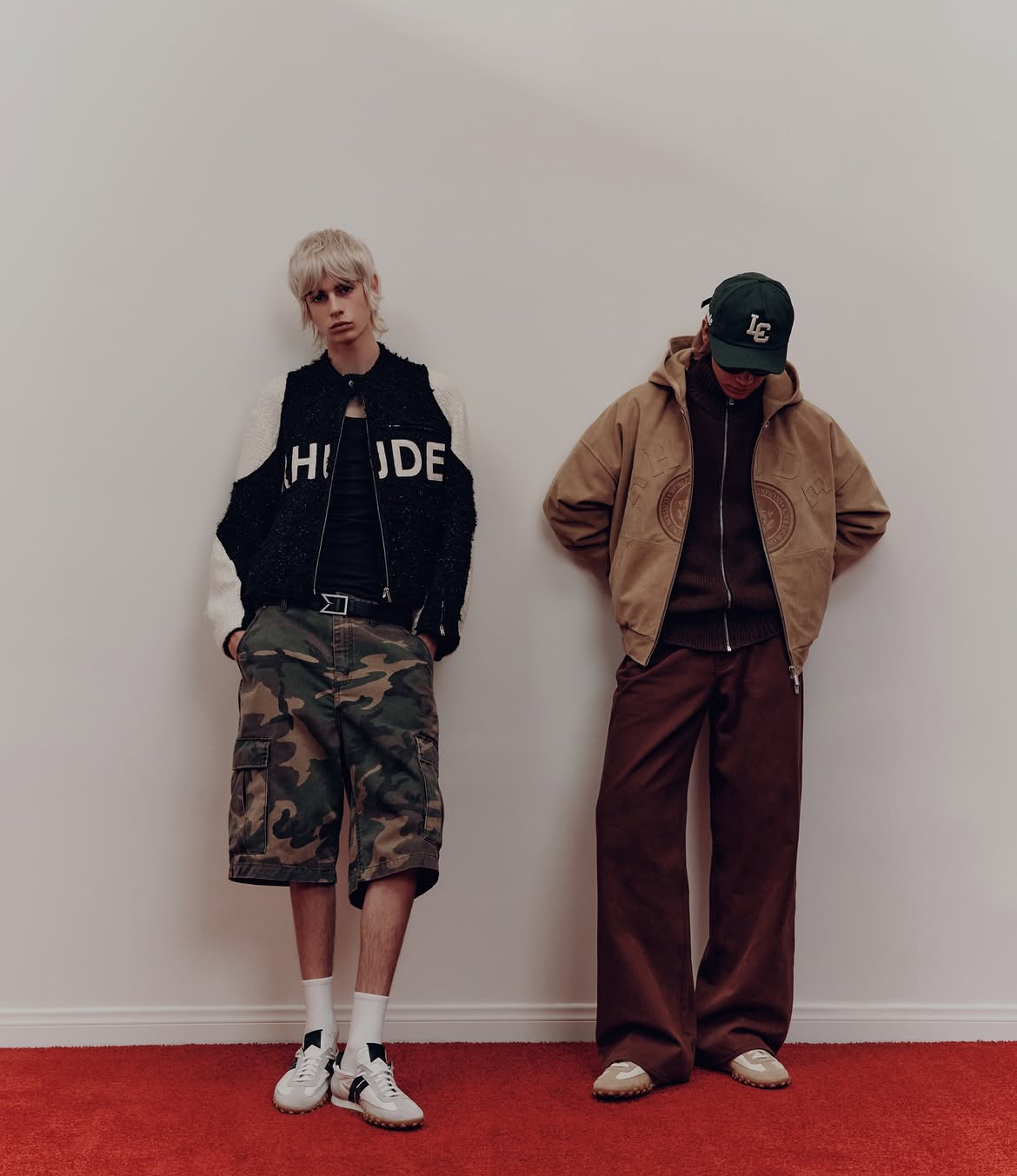
Can you walk us through a typical day in your life right now?
It’s changed a lot from before. From my time in L.A., the rhythm now is very different. A typical day starts early, I go for a jog by the lake in Como, maybe grab a quick breakfast. Then I head into my workday at the stadium, where I manage operations as Chief Brand Officer and part owner of the football club. That goes until around 5PM.
Then I take a short break, maybe three hours, before jumping into L.A. hours, which start around 8 or 9PM. and go until about 2 a.m. I sleep, wake up, and do it all over again.
2AM! That’s intense. Are you a morning person?
I’d say I’m a day person. I can go anytime. Unless I’ve had a glass of whiskey, that can change things. But seriously, on hard days, I just remind myself of the times I wished for all of this, and that motivates me to keep pushing.
Honestly, though, I think the industry right now is pushing so hard for constant evolution, always new, always faster, and I’ve started to reject that. We’ve adjusted our design process to slow things down. We want to make great things, not just “new” things. Like, no one asked for pants with two crotches, you know what I mean?
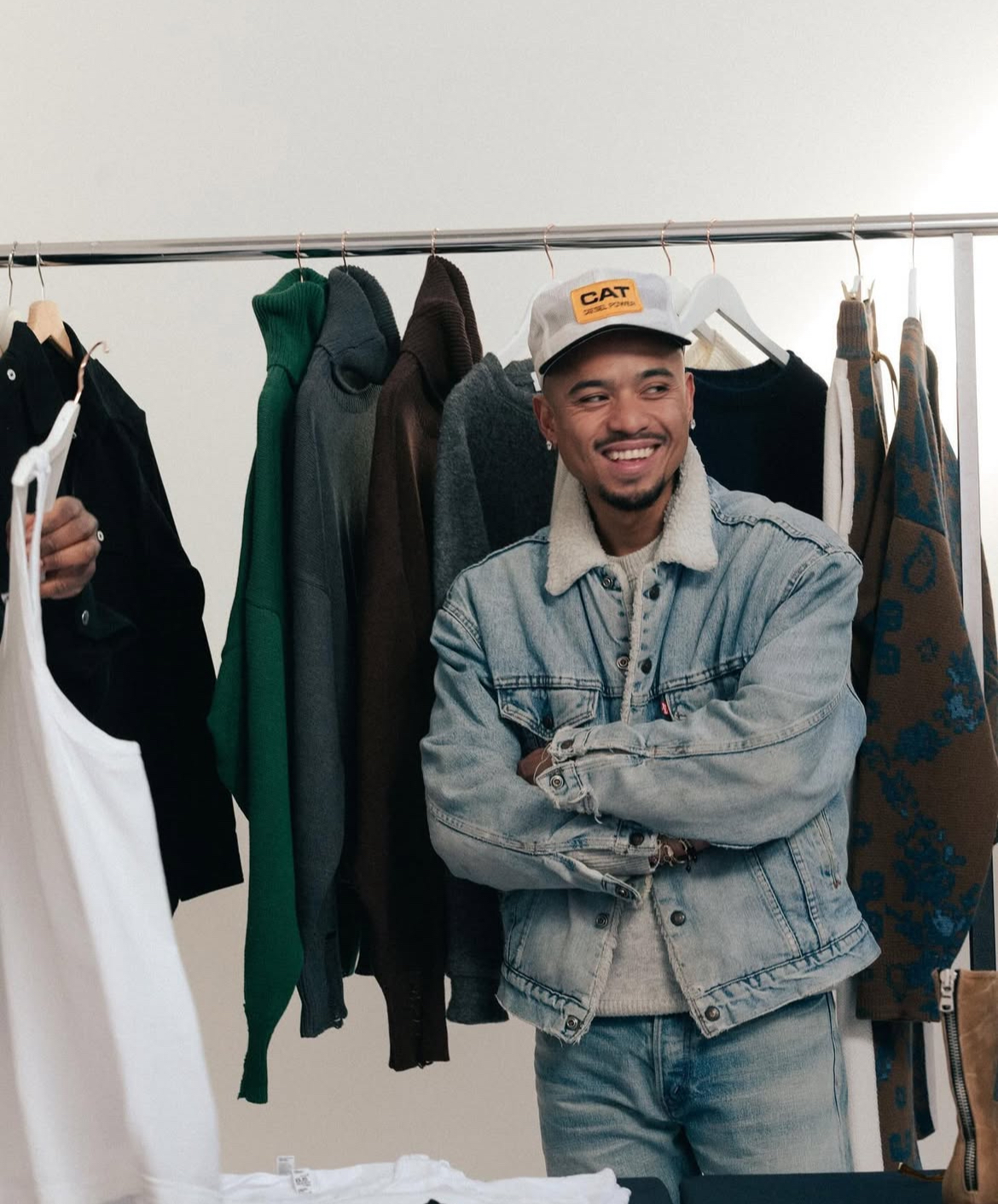
I’m a huge fan of the brand’s creative direction. The Spring/Summer 2025 campaign, “Still Water Runs Deep,” felt especially powerful. How did that come to life?
We were planning the show in Como before I announced my new role with the club. It felt right to return to something classic, not new in concept, but older in spirit. And the lake made the perfect backdrop. It’s hard to make things look bad in Como. The industry often wants to box us into the Paris calendar or traditional formats, but since day one, we haven’t played by those rules. Showing in Como felt like the right move for the story we’re telling: a luxurious rebellion, not against luxury, but within it. A luxurious rule.
We shot a beautiful lookbook there, and it just clicked. As the brand grows, I’ve been thinking more about what the future of our storytelling looks like. I don’t want to feel forced to do fashion weeks every six months. It’s exhausting and not always right for a young luxury house. I want to offer an alternative to that cycle. And that’s where I’m focusing now, on creating timeless things that really resonate.
The brand clearly has a connection with sport and athleticism. Where does that passion come from, and how does it show up in your work?
I actually hate how much it shows up in my work sometimes, it brings this sense of competitiveness, which I don’t like. Fashion shouldn’t be competitive. It’s not a sport. It’s storytelling. But I did grow up playing basketball and watching my parents play tennis. At one point, I really thought I’d play in the NBA. But I’m not tall enough [laughs].
What I dislike is when I catch myself comparing or competing with other designers. That’s not what this is about. There are no points. No scoreboard. Unless you’re measuring sales, and even then, that’s not the point. I think sports and fashion do live in the same world now, though. Everything is integrated, music, fashion, sport. We’re no longer in our silos, and I think that’s a good thing if we can build off each other.
How did the opportunity with Como Football Club come about?
Through my agents, as I started diversifying my investments, this opportunity came up. I wasn’t a huge football fan growing up, but when I thought about it in terms of brand and IP, Como was a no-brainer.
It’s one of those names that resonates globally. You say “Como,” and it immediately evokes luxury, travel, romance. You don’t even have to explain where it is. Compare that to, say, “Chelsea” I wouldn’t know where that is if I wasn’t into football. Como has the power to stand on its own, even outside of sports success. You can sit by the lake, have an aperitivo, and watch a match. It’s sexy.
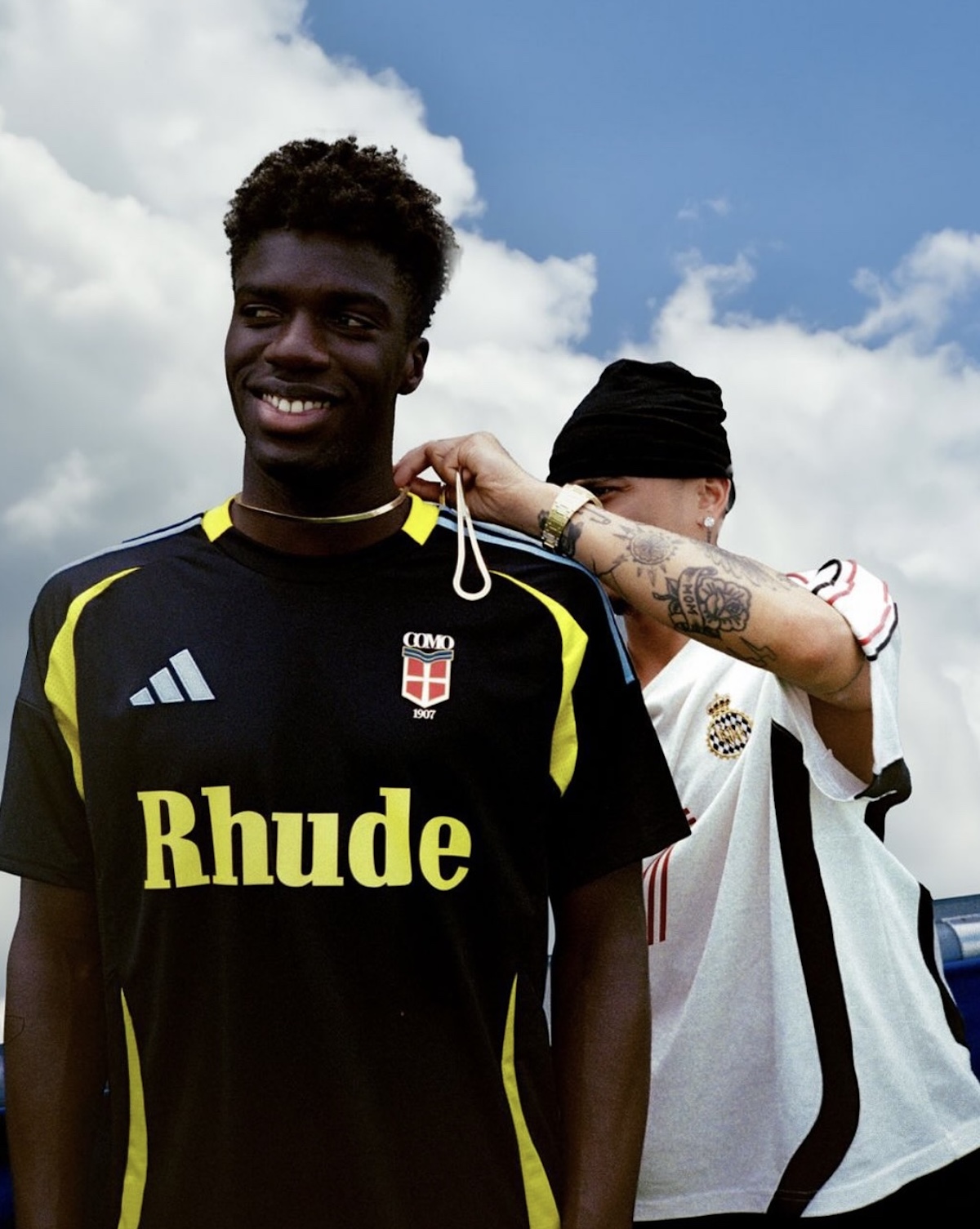
Was it difficult to merge the worlds of luxury fashion and football?
Honestly, it was easy. Sports are about fun, about community. When you lead with that, the rest falls into place. Fashion wants people to feel good, look good, smell good, it’s all relative. But fun is universal. Add the lake, the sun, the chants, it’s a cheat code for fashion people.
The ADIDAS x Como kit collection marked a big moment. What was that process like?
It was historic. It’s one of the first times a luxury brand served as a title sponsor on a kit. Normally, it’s tech companies or airlines like Emirates. But I wanted to flip the script. Instead of fashion being an afterthought, like a merch line or an outline request, I wanted the jersey itself to be the platform. So when you see that shirt, it’s adidas, Como, and boom—RHUDE. That was intentional. Yes, the design was important, but it was more about telling a bigger story and planting a flag for fashion as a major player in sport.
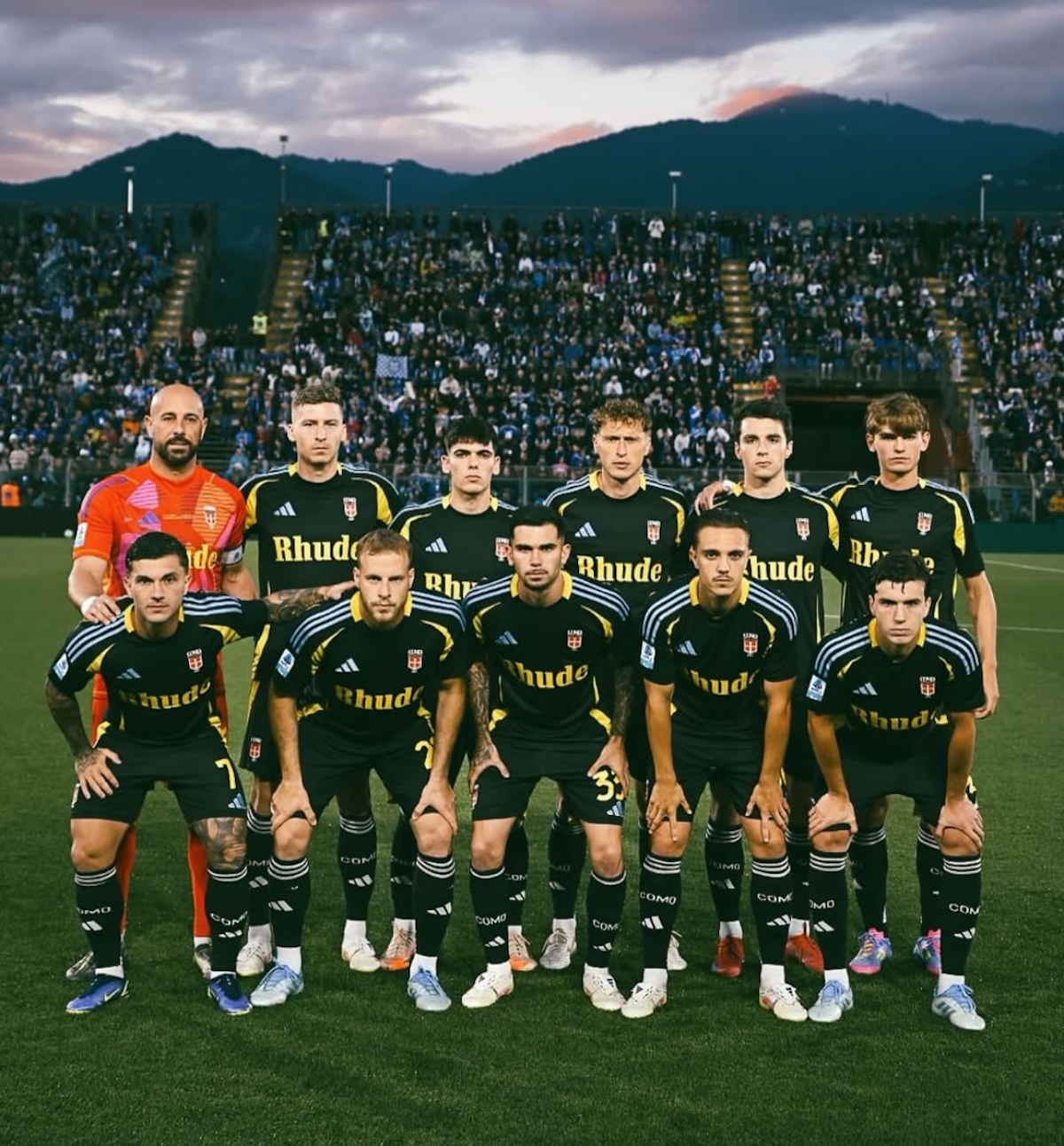
Photo credits: ComoFootball
And the Pirelli collaboration? What did that represent creatively and culturally?
To me, it’s about evolution, aligning with partners that elevate the brand. Marco [from Pirelli] and I connected, and it just made sense. A lot of what I do now is what I imagined as a kid. I dreamed of these luxury alignments, of being on banners next to Lamborghini, Pirelli, Hublot. And now, we’re there. That fuels me.
What about the Hublot partnership?
That was more for the club than for me personally, but I approved it because it made sense. I see myself as the captain of the ship, I’m not rowing or raising the sails, but I’m steering the direction.
Having a watch partner like Hublot adds to the sophistication of the club and builds on that vision of Como being at the intersection of sport and luxury.
Do you have any hobbies outside of design?
Wine. Cigars. Cycling. Riding my Vespa. Rowing in the lake. A bit of tennis, a bit of golf. And I still play ball.
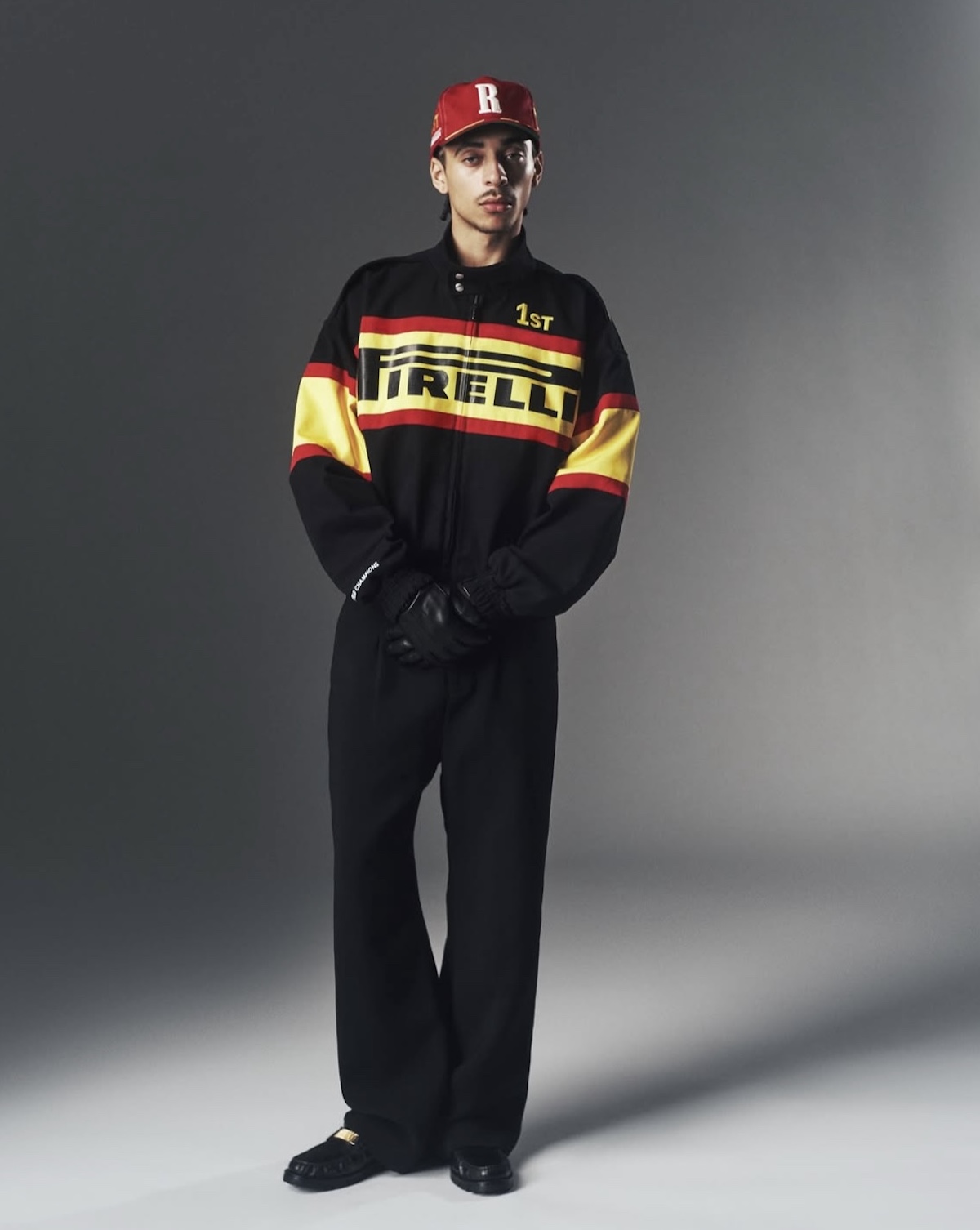
Photo credits: RHUDE/ Roman Koval
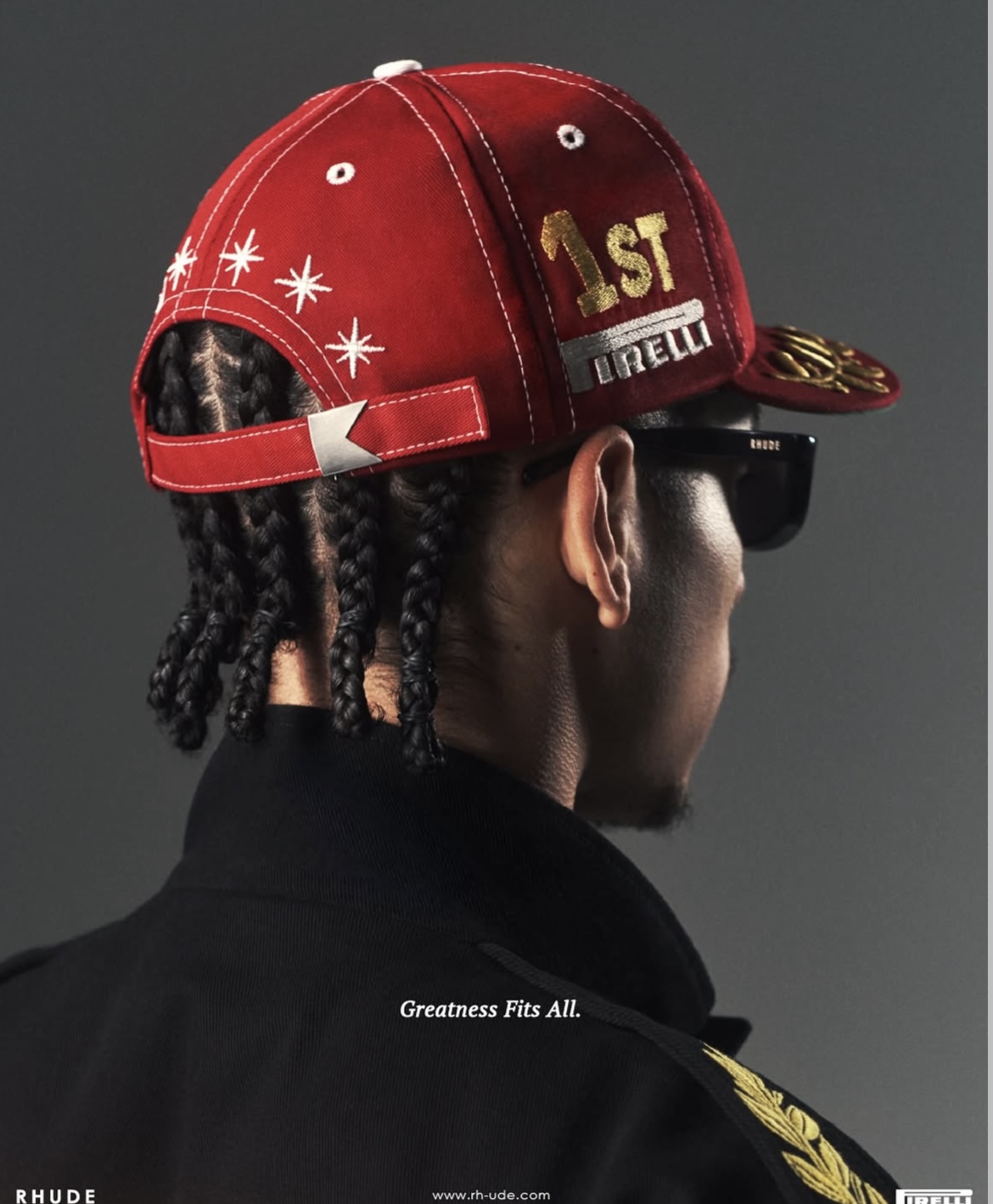
What’s the best part about living there?
The community. The people have golden hearts. They’re so proud of the lake, and they’re welcoming in a way that feels totally different from L.A. And honestly, the food. I can go to a trattoria and spend next to nothing and have the best meal of my life.
Living here has brought me back to the essence of why I started RHUDE. Not in a material way, but spiritually. It’s reminded me of the purity and the drive of those early days.
With everything that’s happened, the growth, the blessings, how do you reflect? How do you make space for that?
I have a great therapist, she’s the best. But truthfully, I’m still figuring it out. I know I need rest. I know I need time. That’s part of the journey too, learning how to pause.
If you could give us a little spoiler, what’s next for RHUDE?
There are more luxury partnerships coming for the club, things you’ve never seen in football before. And for the brand, I’ll be designing for a few other companies. But really, my focus in the next few months is recalibrating, retelling the RHUDE story. Because the trick with partnerships is, the more you do, the more your brand’s message gets diluted. So we’re pulling back, sharpening the narrative, and introducing a couple of new segments. It’s not a rebrand, it’s a refined approach.
